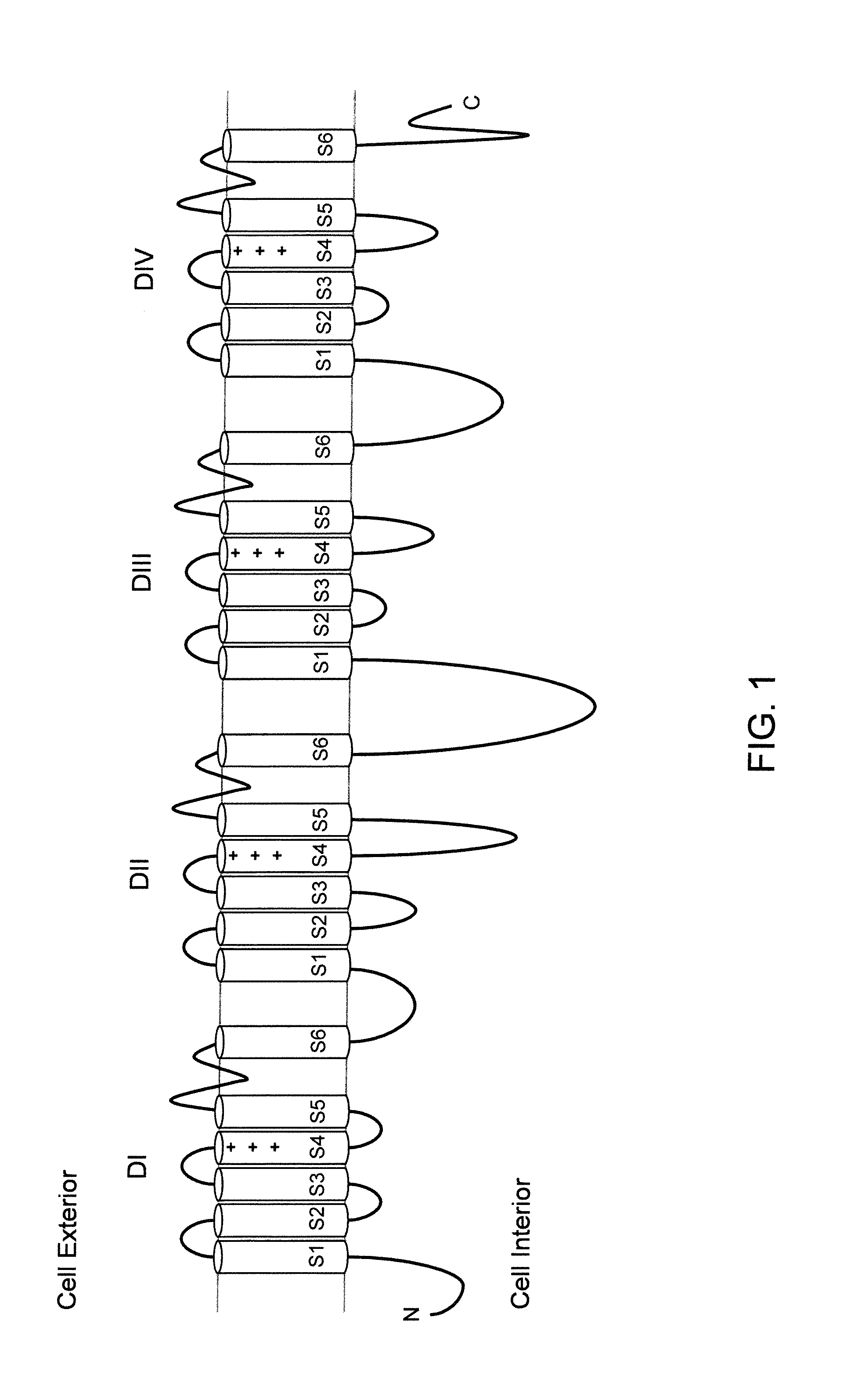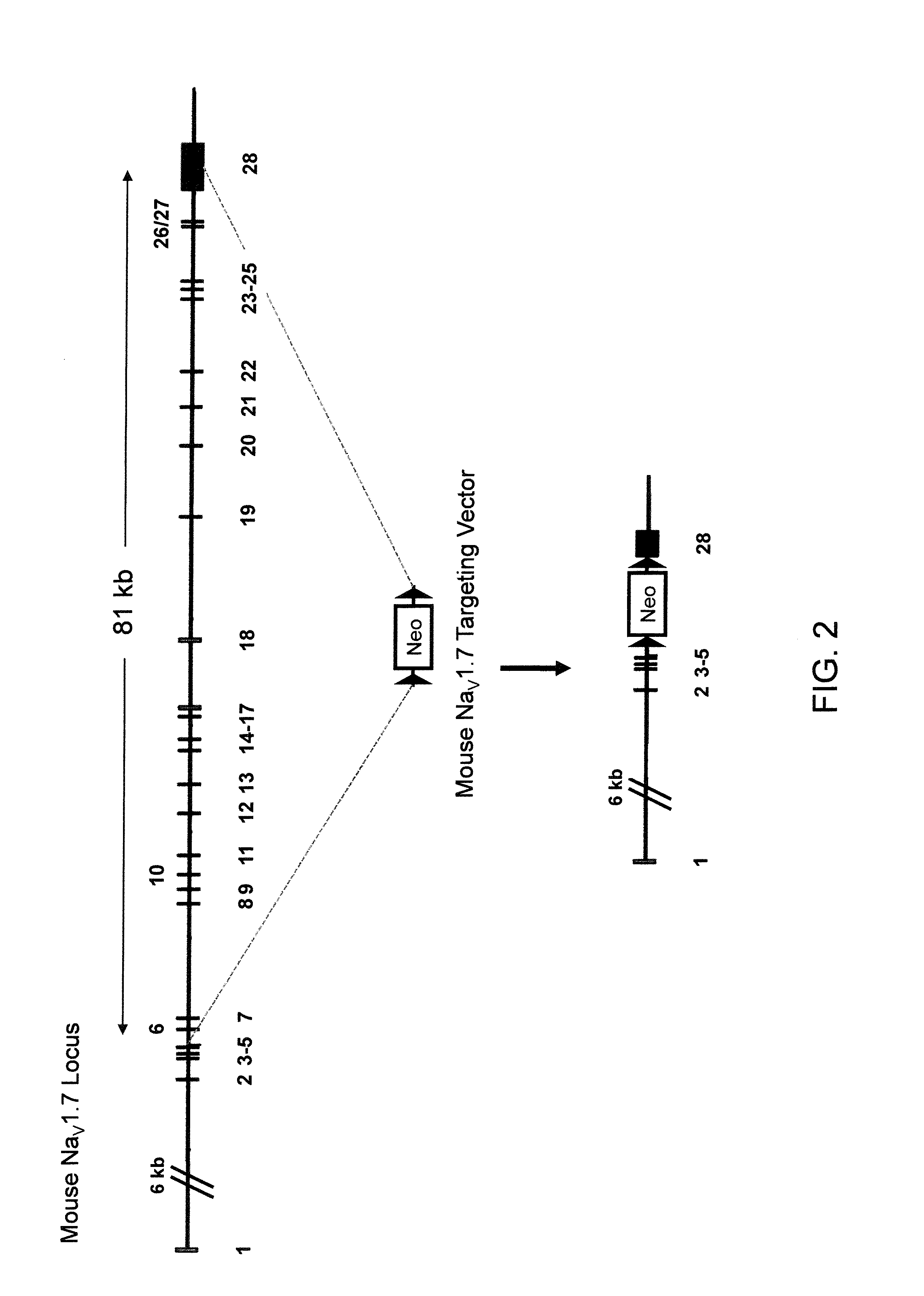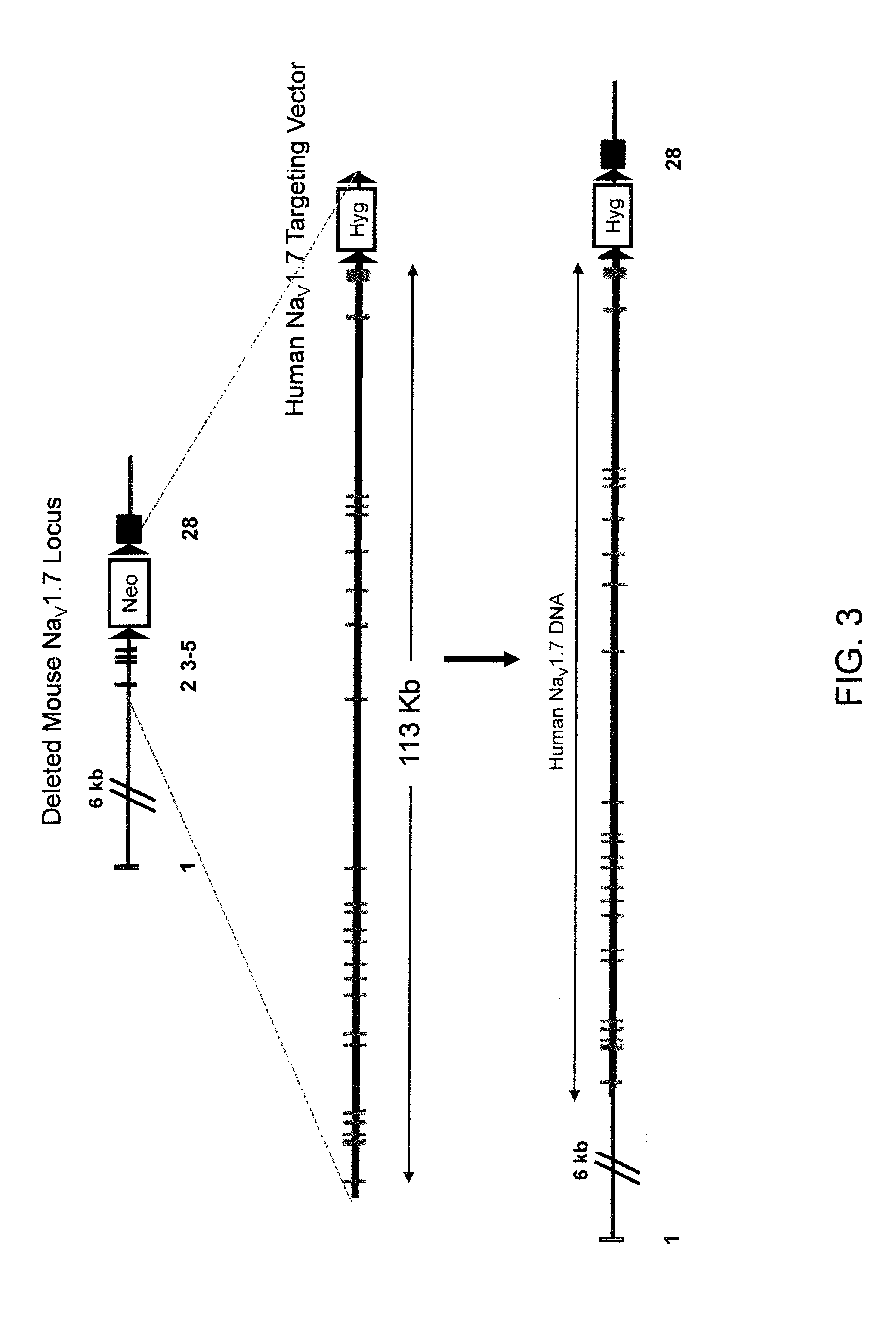Mice expressing human voltage-gated sodium channels
a technology of voltage-gated sodium channels and methylene glycol, which is applied in the field of methylene glycol expressing human voltage-gated sodium channels, can solve the problems of increasing difficulty, lethal global deletion, and difficult to study the global aspects of their biological activity and their involvement in pain respons
- Summary
- Abstract
- Description
- Claims
- Application Information
AI Technical Summary
Benefits of technology
Problems solved by technology
Method used
Image
Examples
examples
[0145]The following examples are provided so as to describe to those of ordinary skill in the art how to make and use methods and compositions of the invention, and are not intended to limit the scope of what the inventors regard as their invention. Unless indicated otherwise, temperature is indicated in Celsius, and pressure is at or near atmospheric.
example i
Deletion of an Endogenous NaV1.7 Locus (FIG. 2)
[0146]The targeting vector for introducing a deletion of the endogenous NaV1.7 gene was made using VELOCIGENE® technology (see, e.g., U.S. Pat. No. 6,586,251 and Valenzuela et al. (2003) High-throughput engineering of the mouse genome coupled with high-resolution expression analysis, Nature Biotech. 21(6):652-659) to modify the Bacterial Artificial Chromosome (BAC) RP23-454H3 (Invitrogen). RP23-454H3 BAC DNA was modified to delete the endogenous NaV1.7 gene comprising the α-subunit of this NaV channel gene that is expressed on the cell surface.
[0147]Briefly, upstream and downstream homology arms were derived mouse BAC DNA from locations 5′ of exon 6 and 3′ of exon 28 of the endogenous NaV1.7 locus, respectively. These homology arms were used to make a cassette that deleted ˜81 kb of the endogenous NaV1.7 locus comprising exons 6 to 28. This region was replaced with a neomycin cassette flanked by loxP sites (FIG. 2, middle). The final ta...
example ii
Humanization of an Endogenous NaV1.7 Locus (FIG. 3)
[0152]A targeting vector for replacement of the endogenous NaV1.7 locus with the human NaV1.7 locus was constructed using a two step process involving ligation of BAC DNA and GAP repair (Zhang et al. 2000 Nature Biotechnology 18:1314-1317 and Zhang et al. 1998 Nature Genetics 20:123-128).
[0153]The first step in constructing the replacement targeting vector was performed by ligation of a DNA fragment of mouse BAC DNA clone RP23-454H3 with a human DNA fragment from human BAC clone RP11-1002M1 (Invitrogen). This ligation of mouse and human BAC DNA fragments created a modified BAC clone containing a replacement of exons 5 to 28 of the mouse NaV1.7 locus (about 81 kb) with exons 5 to 28 of the human NaV1.7 locus (about 100 kb).
[0154]The second step in constructing the replacement targeting vector was performed by GAP repair (referenced above) using mouse BAC clone RP23-454H3 and human BAC clone RP11-45AJ20 to add additional exons of the ...
PUM
| Property | Measurement | Unit |
|---|---|---|
| density | aaaaa | aaaaa |
| density | aaaaa | aaaaa |
| extracellular pore | aaaaa | aaaaa |
Abstract
Description
Claims
Application Information
 Login to View More
Login to View More - R&D
- Intellectual Property
- Life Sciences
- Materials
- Tech Scout
- Unparalleled Data Quality
- Higher Quality Content
- 60% Fewer Hallucinations
Browse by: Latest US Patents, China's latest patents, Technical Efficacy Thesaurus, Application Domain, Technology Topic, Popular Technical Reports.
© 2025 PatSnap. All rights reserved.Legal|Privacy policy|Modern Slavery Act Transparency Statement|Sitemap|About US| Contact US: help@patsnap.com



